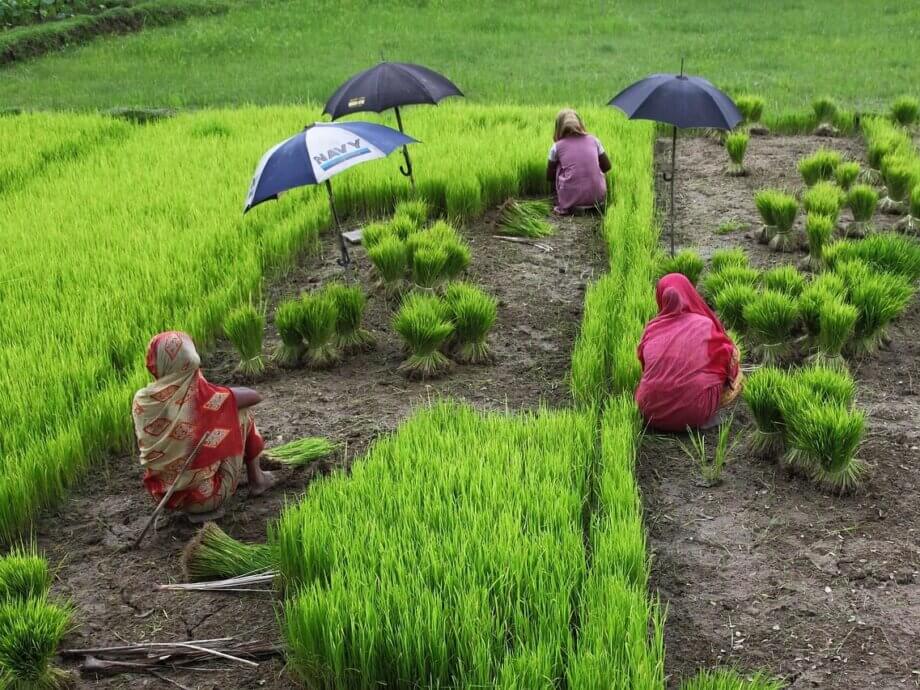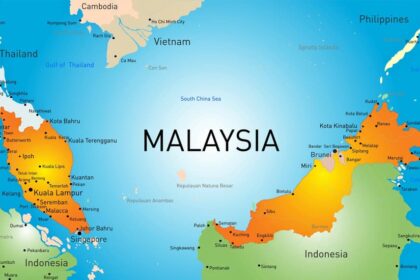Bangladesh Faces Soaring Prices of Daily Essentials: A Deepening Crisis
In recent months, Bangladesh has witnessed a sharp and persistent rise in the prices of daily essentials such as rice, vegetables, and fish. This trend has caused widespread concern among consumers, particularly those with limited incomes, and has intensified the financial strain on millions of households across the country. Despite robust harvests and seemingly adequate supply, the cost of basic food items continues to climb, raising questions about the underlying causes and the effectiveness of government interventions.
- Bangladesh Faces Soaring Prices of Daily Essentials: A Deepening Crisis
- How Much Have Prices Increased?
- Why Are Prices Rising Despite Adequate Supply?
- Impact on Consumers: Struggling to Make Ends Meet
- Rice: The Main Driver of Food Inflation
- Vegetables and Fish: Persistent High Prices Despite Supply
- Government Response and Public Perception
- Broader Economic and Social Implications
- What Can Be Done? The Road Ahead
- In Summary
How Much Have Prices Increased?
Across Dhaka and other major cities, the price hikes have been both rapid and significant. According to market surveys and reports from multiple sources, the following trends have been observed:
- Rice: Over the past four weeks, rice prices have increased by Tk 3 to Tk 8 per kilogram, depending on the variety. Coarse rice now sells for Tk 55-58 per kg, medium varieties like BRRI-28 and BRRI-29 for Tk 60-66, and finer types such as Miniket and Najirshail for Tk 76-90 per kg. In some markets, fine rice has even reached Tk 100 per kg.
- Vegetables: The cost of vegetables has surged by Tk 10-40 per kg in many markets. Common items like brinjal, bitter gourd, and long-yard beans are selling for Tk 80-150 per kg, while tomatoes have reached as high as Tk 160-300 per kg. Even the cheapest vegetables, such as papaya, rarely sell below Tk 50 per kg.
- Fish: Fish prices have also climbed, with hilsa now costing Tk 2,400-3,200 per kg, up by Tk 100-200 in just a week. Other popular fish like ruhi, katla, and shrimp have seen increases of Tk 20-50 per kg.
- Other essentials: Onions, potatoes, and eggs have also experienced price volatility. Local onions are retailing at Tk 55-65 per kg, potatoes at Tk 20-65 per kg, and eggs at Tk 110-160 per dozen, with some recent relief in egg prices.
These increases are not isolated to the capital; similar trends are reported in markets across the country, affecting both urban and rural consumers.
Why Are Prices Rising Despite Adequate Supply?
The persistent rise in food prices in Bangladesh is a complex issue, driven by a combination of supply-side disruptions, market manipulation, and broader economic factors. Here are the key contributors:
Weather and Crop Damage
Continuous rainfall and flooding in several districts have severely disrupted vegetable production. According to the Department of Agricultural Extension (DAE), floods and heavy rain have damaged tens of thousands of hectares of crops, particularly in the eastern, Mymensingh, and Rangpur regions. This has led to a 30-40% reduction in vegetable supply, pushing prices higher even as demand remains steady.
Market Manipulation and Syndicates
Market observers and consumer rights groups have repeatedly pointed to the role of powerful business syndicates and traders in artificially inflating prices. These groups, often with political connections, are accused of hoarding, restricting supply, and creating a false sense of scarcity. This manipulation is especially pronounced in the rice market, where millers and corporate entities buy up paddy at low prices, store it, and then release it at higher prices, even during peak harvest seasons.
SM Nazer Hossain, Vice-President of the Consumers Association of Bangladesh (CAB), explains:
“Corporate entities are now controlling the rice market. They buy paddy from farmers at the very beginning. Then, after the paddy leaves the farmers’ hands, they increase the price of rice. For the past few seasons, they have been influencing the rice market in this way.”
Transportation and Distribution Costs
Rising fuel prices and increased transportation costs have also contributed to higher retail prices. Even when supply is adequate at the farm level, the cost of moving goods to urban markets adds a significant markup, especially for perishable items like vegetables and fish.
Global Economic Pressures
Bangladesh is not immune to global market dynamics. Fluctuations in international prices for rice, wheat, and fuel, as well as disruptions in global supply chains, have a direct impact on local prices. The Russia-Ukraine war, for example, has affected wheat imports, while higher global oil prices have increased production and distribution costs across the board.
Impact on Consumers: Struggling to Make Ends Meet
The price surge has hit low- and middle-income families the hardest. For many, the cost of basic groceries now consumes a much larger share of household income, forcing difficult choices and cutbacks on nutrition, healthcare, and other essentials.
Stories from the Market
Abdur Rahman, who runs a small roadside hotel in Dhaka, describes the burden:
“After Eid, the price of all vegetables went up by around Tk 10 per kg. Potatoes are more expensive now. If the government does not monitor the market properly, prices may rise even more. It’s becoming a burden on my family.”
Similar sentiments are echoed by shoppers across the city, many of whom now buy vegetables in smaller quantities—sometimes as little as 250 grams at a time—because they can no longer afford to purchase by the kilogram.
Food Insecurity and Coping Strategies
According to a recent World Food Programme (WFP) report, the average per capita food cost for people below the poverty line rose by 58% over the past two years, from Tk 1,851 in 2022 to Tk 2,923 in February 2024. The report also found that:
- 17% of people were under food insecurity in February 2024, up from 15% the previous month.
- 68% of households are coping by cutting costs, 43% are buying food on credit, 22% have reduced medical expenses, and 13% are relying on savings.
- Only 21% of food-insecure households are receiving any form of assistance.
These figures highlight the growing vulnerability of Bangladesh’s poor and the limited reach of social safety nets.
Rice: The Main Driver of Food Inflation
Rice, the staple food for most Bangladeshis, has been identified as the single largest contributor to food inflation. According to the General Economics Division (GED) of the Planning Commission, rice accounted for 34% of food inflation in March 2025, followed by fish (27%) and vegetables (14%).
The price of rice has surged despite a bumper Boro harvest and government data showing robust production. Experts attribute this paradox to market manipulation, crop losses from earlier floods, and higher international prices. The price of coarse rice has increased by 57% compared to pre-pandemic levels, and fine rice varieties have seen even sharper rises.
Why Are Rice Prices So Sensitive?
Rice is not only a dietary staple but also a key economic and political issue in Bangladesh. Any fluctuation in its price has immediate and widespread effects on food security, inflation, and public sentiment. The government has attempted to stabilize prices through import duty reductions and increased monitoring, but these measures have had limited impact so far.
Expert Insights
Monzur Hossain, a member of the GED, notes:
“Inflation is currently one of the most pressing issues. There are very few analytical reports that examine why inflation occurs and how different products contribute to it. The sharp increase in rice prices warrants urgent attention.”
He emphasizes the need for both short-term and long-term interventions, including boosting rice production, improving supply chain management, and enhancing market oversight.
Vegetables and Fish: Persistent High Prices Despite Supply
While rice prices have dominated headlines, vegetables and fish have also become increasingly unaffordable for many families. The reasons are multifaceted:
- Weather Disruptions: Floods and heavy rains have damaged crops and reduced supply, especially for summer and early winter vegetables.
- Market Gaps: There is a significant price gap—sometimes as high as 100-250%—between village-level and city retail markets, driven by middlemen and lack of direct farm-to-market channels.
- Fish Supply: Despite increased supply of some fish varieties, prices remain high due to transportation costs, market manipulation, and seasonal demand spikes (such as during festivals).
Consumers and traders alike have called for stronger government monitoring and action against unscrupulous practices in the supply chain.
Government Response and Public Perception
The government has taken several steps to address the crisis, including:
- Reducing import duties on essential goods like rice, potatoes, sugar, oil, and onions.
- Halving the margin for opening letters of credit for imports to ease supply bottlenecks.
- Increasing market monitoring and surveillance of key players in the supply chain.
- Raising interest rates to curb demand and control inflation.
However, public opinion remains skeptical. A recent survey by Voice of America Bangla found that 44.7% of respondents believe the government has performed poorly in controlling prices, while only 23.8% think the current administration is doing better than its predecessor. The majority of respondents, especially women, feel that the situation has either remained unchanged or worsened.
Calls for Stronger Action
Experts and consumer advocates argue that more robust regulatory frameworks and enforcement are needed to break the grip of market syndicates and ensure fair pricing. They also stress the importance of supporting local farmers, diversifying supply sources, and investing in climate-resilient agriculture to reduce vulnerability to future shocks.
Mustafa Kamal Mujeri, executive director of the Institute for Inclusive Finance and Development, states:
“We have to make our market competitive and justified. There should not be any opportunity for the influential quarter to control the market unlawfully.”
Broader Economic and Social Implications
The ongoing price surge is not just an economic issue—it has far-reaching social and political consequences. High food prices have fueled public frustration, eroded trust in institutions, and contributed to political instability. Inflation has hovered around 10% since 2023, with food inflation reaching nearly 13% at times. The poor and vulnerable are disproportionately affected, with many forced to reduce food intake, compromise on nutrition, or go into debt to meet basic needs.
Bangladesh’s experience also reflects broader global trends, as many developing countries grapple with similar challenges amid climate change, geopolitical tensions, and volatile commodity markets.
What Can Be Done? The Road Ahead
Addressing the crisis of rising food prices in Bangladesh requires a multifaceted approach:
- Strengthen Market Oversight: Empower regulatory bodies to monitor and control market activities, crack down on hoarding and price manipulation, and ensure transparency in the supply chain.
- Support Farmers: Provide subsidies, training, and access to technology to boost domestic production and reduce dependence on imports.
- Invest in Infrastructure: Improve transportation, storage, and distribution networks to reduce costs and minimize post-harvest losses.
- Enhance Social Safety Nets: Expand food assistance programs to reach more vulnerable households and cushion the impact of price shocks.
- Promote Climate Resilience: Invest in sustainable agricultural practices and disaster preparedness to mitigate the effects of floods and other natural disasters.
- Foster Political Stability: Address governance challenges and ensure that policies prioritize public welfare over vested interests.
While some relief may come with the arrival of new harvests and improved supply, lasting solutions will depend on the government’s ability to implement effective reforms and restore confidence in the market.
In Summary
- Prices of rice, vegetables, and fish have risen sharply in Bangladesh, straining household budgets and increasing food insecurity.
- Key drivers include weather-related crop damage, market manipulation by syndicates, rising transportation costs, and global economic pressures.
- Rice is the main contributor to food inflation, with prices up 57% compared to pre-pandemic levels.
- Vegetable and fish prices remain high despite some improvements in supply, due to distribution gaps and market practices.
- Low- and middle-income families are hardest hit, with many resorting to cost-cutting, credit, and reduced nutrition.
- Government measures have had limited impact so far, and public confidence in price control efforts is low.
- Experts call for stronger regulation, support for farmers, investment in infrastructure, and climate resilience to address the crisis.
- Comprehensive reforms are needed to ensure food security and economic stability for Bangladesh’s most vulnerable citizens.












